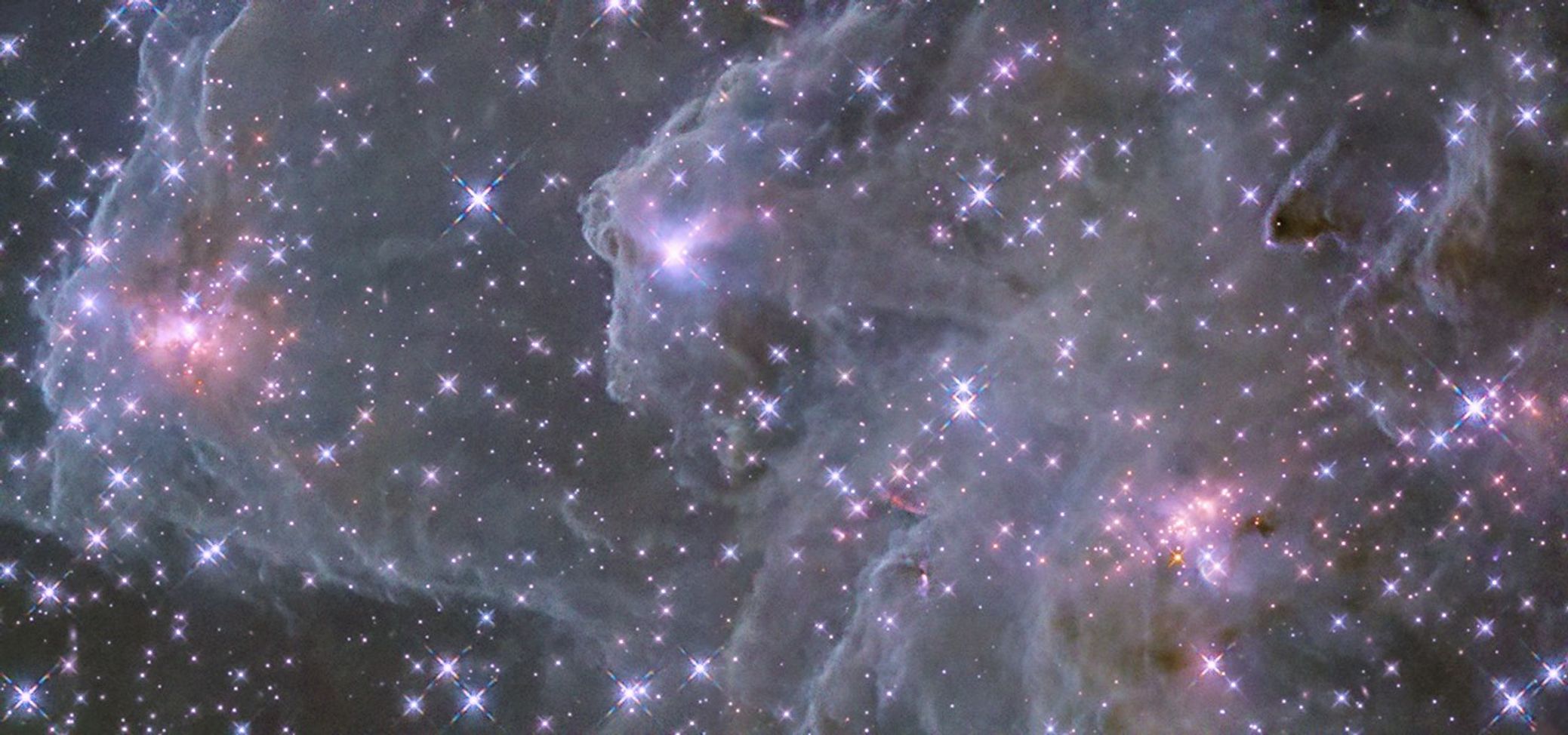2 min read
Hubble Unveils a Glittering View of Sh2-284 Hubble’s infrared view of emission nebula Sh2-284 provides a glimpse of the brilliant young stars hidden within clouds of gas and dust. Credit: NASA, ESA, and M. Andersen (European Southern Observatory – Germany); Processing: Gladys Kober (NASA/Catholic University of America) Download this imageA tiny fraction of the stellar nursery known as Sh2-284 is visible in this glittering, star-filled NASA Hubble Space Telescope image. This immense region of gas and dust is the birthing place of stars, which shine among the clouds. Bright clusters of newborn stars glow pink in infrared light, and clouds of gas and dust, resembling puffy cumulus clouds, are dotted with dark knots of denser dust.
This image shows an infrared view from Hubble, giving an excellent view of the stars that might otherwise be obscured by Sh2-284’s clouds. Unlike visible light, infrared wavelengths can travel through clouds of gas and dust, providing a glimpse of the stars forming within the obscuring clouds.
The nebula is shaped by a young central star cluster, Dolidze 25 (not visible in the Hubble image), whose stars range from 1.5 to 13 million years old (our Sun, in contrast, is 4.6 billion years old). The cluster blasts out ionizing winds and radiation, pushing at the gas and dust of the nebula and carving out intricate shapes and pillars, as seen in detail here. This ionizing radiation gives Sh2-284 its classification as an HII region, an emission nebula consisting primarily of ionized hydrogen. An emission nebula like Sh2-284 glows with its own light as stars within or nearby energize its gas with a flood of intense ultraviolet radiation.
The ground-based image (top) of M24 shows the location of the Hubble view (bottom). The European Southern Observatory’s visible-light image shows prominent clouds of gas and dust, while the Hubble image’s infrared vision highlights the stars within and behind the clouds. Ground-based image: ESO/VPHAS+ Team; Hubble image: NASA, ESA, and M. Andersen (European Southern Observatory – Germany); Processing: Gladys Kober (NASA/Catholic University of America)Sh2-284 is also a low-metallicity region, which means it is poor in elements heavier than hydrogen and helium. These conditions mimic the early universe, when matter was mostly helium and hydrogen and heavier elements were just beginning to form via nuclear fusion within massive stars. Hubble took these images as part of an effort to examine how low metallicity influences stellar formation and how this would apply to the early universe.
Sh2-284 resides 15,000 light-years away at the end of an outer spiral arm of our Milky Way galaxy, in the constellation Monoceros.
Explore More Hubble’s Nebulae Exploring the Birth of Stars Facebook logo @NASAHubble @NASAHubble Instagram logo @NASAHubbleMedia Contact:
Claire AndreoliNASA’s Goddard Space Flight Center, Greenbelt, [email protected]
Share
Details
Last Updated Mar 08, 2025 Location NASA Goddard Space Flight CenterRelated Terms
Hubble Space Telescope Astrophysics Astrophysics Division Emission Nebulae Goddard Space Flight Center Nebulae Star-forming Nebulae The Universe Keep ExploringDiscover More Topics From Hubble
Hubble Space Telescope
Since its 1990 launch, the Hubble Space Telescope has changed our fundamental understanding of the universe.
Hubble’s Cosmic Adventure
Hubble’s Night Sky Challenge
Hubble’s 35th Anniversary
Read More Details
Finally We wish PressBee provided you with enough information of ( Hubble Unveils a Glittering View of Sh2-284 )
Also on site :
- Watch Live: American Cardinal Robert Provost chosen as new pope
- White smoke appears over Sistine Chapel as Conclave elects new Pope
- Joanna Gaines' Crunchy-Sweet Asian Salad Is Easy to Love

